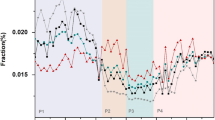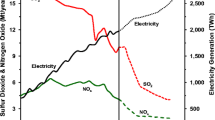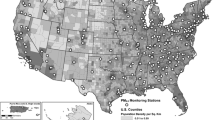Abstract
Emission events are upsets (unavoidable breakdowns in process or operation) or unscheduled maintenance, startup, or shutdown activities within industrial facilities that can release large amounts of pollutants for several hours or days, potentially causing air quality to exceed standards established to protect the environment and human health. The Greater Houston area is home to the largest petrochemical complexes in the United States, so the likelihood of emission events is higher in this area than in other areas in the nation. Notable emission events in the Greater Houston area have caused unexpected explosions, fires, and releases of toxic chemicals, which have killed workers and triggered various health issues among nearby communities. Understanding how to minimize these emission events can help protect the health of Houstonians. In this study, we analyzed emission event data for the Greater Houston area extracted from the Texas Commission on Environmental Quality (TCEQ) emission event database during 2003–2013 for criteria and other selected pollutants to identify annual and seasonal trends and industrial classification patterns. We evaluated 7273 emission events and found that total event incidents and releases from nitrogen oxides (NOX), carbon monoxide (CO), and sulfur dioxide (SO2) have generally decreased from 2003 to 2013, whereas particulate matter (PM) event emissions have generally increased during this period. Our seasonal analyses demonstrated that emission events were more likely to occur during winter for several pollutants. We also found that emission events were mainly generated from the chemical manufacturing and petroleum and coal products manufacturing industries. In addition, we found strong interrelationships between different pairs of pollutants during these emission events. We compared these results against regulatory policy and found potential gaps within the state regulations and TCEQ emission event database explaining our findings, and we provided recommendations on closing these gaps. Our study could drive policy change to lower emission events in the Greater Houston area, potentially improving air quality and reducing the health impacts from these events.





Similar content being viewed by others
References
Allen D et al. (2004) Variable Industrial VOC Emissions and their Impact on Ozone Formation in the Houston Galveston Area. Texas Environmental Research Consortium Project H-13. https://www3.epa.gov/ttnchie1/conference/ei13/uncertainty/allen.pdf. Accessed 26 Jan 2014
Bozlaker A, Buzcu-Guven B, Fraser M, Chellam S (2013) Insights into PM10 sources in Houston, Texas: role of petroleum refineries in enriching lanthanoid metals during episodic emission events. Atmos Environ 69:109–117
International Technical Centre for Studies on Air Pollution (CITEPA) (2004) Petroleum Refineries for SO2, NOX and TSP, Draft Background Document. http://www.citepa.org/old/forums/egtei/petroleum_refineries_250204.pdf. Accessed 2 Aug 2015
Lombardi K (2012) BP engulfed in lawsuit over 40-day Texas flare. The Center for Public Integrity. http://www.publicintegrity.org/2012/12/05/11882/bp-engulfed-lawsuit-over-40-day-texas-flare. Accessed 2 Aug 2015
McCoy B, Fischbeck P, Gerard D (2010) How big is big? How often is often? Characterizing Texas petroleum refining upset air emissions. Atmos Environ 44:4230–4239
Revich B, Shaposhnikov D (2009) The effects of particulate and ozone pollution on mortality in Moscow, Russia. Air Qual Atmos Health 3:117–123
Sexton K et al. (2006) A Closer Look at Air Pollution in Houston: Identifying Priority Health Risks, Report of the Mayor’s Task Force on the Health Effects of Air Pollution. Institute for Health Policy Report ES-001-006. https://sph.uth.edu/content/uploads/2011/12/UTReportrev.pdf. Accessed 17 May 2015
State of Texas v. BP Products North America Inc. (Texas v. BP) (2009) Plaintiff’s First Amended Original Petition and Application for Temporary and Permanent Injunctions, No. D-1-GV-09-000921
State of Texas v. BP Products North America Inc. (Texas v. BP) (2010) Plaintiff’s Original Petition, DG-1-GV
Texas Commission on Environmental Quality (TCEQ) (2014) Compliance History: How it Works. TCEQ RG-457. https://webcache.googleusercontent.com/search?q=cache:93M7RIMti5MJ:https://www.tceq.texas.gov/publications/rg/rg-457.html/at_download/file+&cd=1&hl=en&ct=clnk&gl=us. Accessed 2 Aug 2015
Texas Natural Resource Conservation Commission (TNRCC) (2001) Rule Log Number 2001–075-101-AI. TNRCC Chapter 101 – General Air Quality Rules. http://www.tceq.state.tx.us/assets/public/policy/pr/rule_lib/proposals/01075101_pro.pdf. Accessed 19 Dec 2015
Thunis P, Degraeuwe B, Culvelier K, Guevara M, Tarrason L, Clappier A (2016) A novel approach to screen and compare emission inventories. Air Qual Atmos Health 9:325–333
United States Energy Information Administration (EIA) (2014a) Outlook for U.S. Shale Oil and Gas. Annual Energy Outlook 2014 Early Release. http://www.eia.gov/pressroom/presentations/sieminski_01042014.pdf. Accessed 2 Aug 2015
United States Energy Information Administration (EIA) (2014b) Shale gas provides largest share of U.S. natural gas production in 2013. EIA Today in Energy. http://www.eia.gov/todayinenergy/detail.cfm?id=18951. Accessed 2 Aug 2015
United States Energy Information Administration (EIA) (2014c) Texas State Profile and Energy Estimates. EIA State Profile and Energy Estimates. http://www.eia.gov/state/analysis.cfm?sid=TX. Accessed 2 Aug 2015
United States Environmental Protection Agency (U.S. EPA) (1996) Review of National Ambient Air Quality Standards for Particulate Matter: Policy Assessment of Scientific and Technical Paper. Office of Air Quality Planning and Standards, Research Triangle Park, NC
World Health Organization (WHO) (2010) Exposure to Benzene: A Major Public Health Concern. WHO Document Production Services. http://www.who.int/ipcs/features/benzene.pdf. Accessed 16 June 2015
World Health Organization (WHO) (2011) Tackling the Global Clean Air Challenge. WHO Media Center. http://www.who.int/mediacentre/news/releases/2011/air_pollution_20110926/en/. Accessed 16 June 2015
World Health Organization (WHO) (2014a) Ambient (Outdoor) Air Quality and Health. WHO Media Center. http://www.who.int/mediacentre/factsheets/fs313/en/. Accessed 16 June 2015
World Health Organization (WHO) (2014b) 7 Million Premature Deaths Annually Linked to Air Pollution. WHO Media Center. http://www.who.int/mediacentre/news/releases/2014/air-pollution/en/. Accessed 16 June 2015
Acknowledgements
The research described in this article was supported through the startup funds provided by the School of Public Health, The University of Texas Health Science Center at Houston. The authors thank Dr. George Delclos, MD, MPH, for his advice and support.
Author information
Authors and Affiliations
Corresponding author
Additional information
Highlights
• Emission events of NOx, CO, and SO2 decreased over time.
• Particulate matter event emissions appeared to be increasing since 2009.
• More event emissions for several pollutants occurred during winter.
• Most of event emissions were from chemical and fossil fuel industries.
• Strong correlations exist between different pairs of pollutants during emission events.
Rights and permissions
About this article
Cite this article
Luong, C., Zhang, K. An assessment of emission event trends within the Greater Houston area during 2003–2013. Air Qual Atmos Health 10, 543–554 (2017). https://doi.org/10.1007/s11869-016-0449-5
Received:
Accepted:
Published:
Issue Date:
DOI: https://doi.org/10.1007/s11869-016-0449-5




